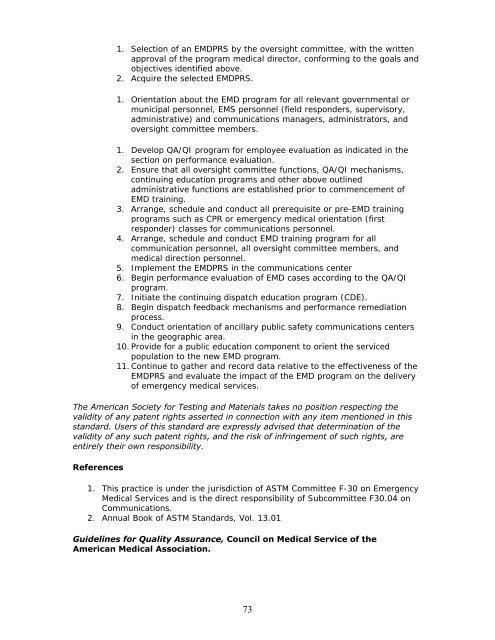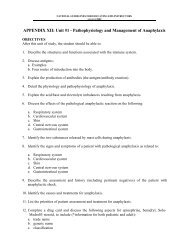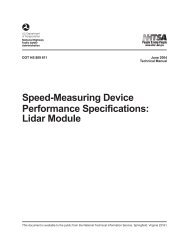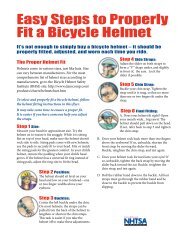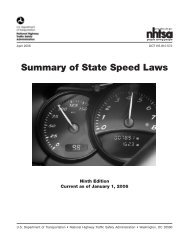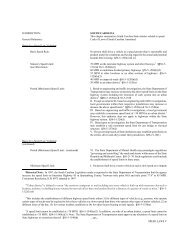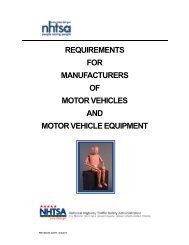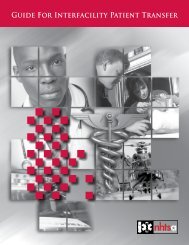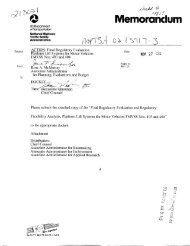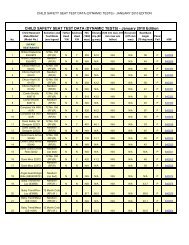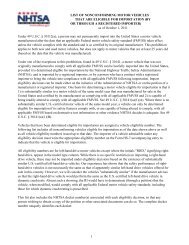Standard Practice for Emergency Medical Dispatch ... - NHTSA
Standard Practice for Emergency Medical Dispatch ... - NHTSA
Standard Practice for Emergency Medical Dispatch ... - NHTSA
You also want an ePaper? Increase the reach of your titles
YUMPU automatically turns print PDFs into web optimized ePapers that Google loves.
1. Selection of an EMDPRS by the oversight committee, with the written<br />
approval of the program medical director, con<strong>for</strong>ming to the goals and<br />
objectives identified above.<br />
2. Acquire the selected EMDPRS.<br />
1. Orientation about the EMD program <strong>for</strong> all relevant governmental or<br />
municipal personnel, EMS personnel (field responders, supervisory,<br />
administrative) and communications managers, administrators, and<br />
oversight committee members.<br />
1. Develop QA/QI program <strong>for</strong> employee evaluation as indicated in the<br />
section on per<strong>for</strong>mance evaluation.<br />
2. Ensure that all oversight committee functions, QA/QI mechanisms,<br />
continuing education programs and other above outlined<br />
administrative functions are established prior to commencement of<br />
EMD training.<br />
3. Arrange, schedule and conduct all prerequisite or pre-EMD training<br />
programs such as CPR or emergency medical orientation (first<br />
responder) classes <strong>for</strong> communications personnel.<br />
4. Arrange, schedule and conduct EMD training program <strong>for</strong> all<br />
communication personnel, all oversight committee members, and<br />
medical direction personnel.<br />
5. Implement the EMDPRS in the communications center<br />
6. Begin per<strong>for</strong>mance evaluation of EMD cases according to the QA/QI<br />
program.<br />
7. Initiate the continuing dispatch education program (CDE).<br />
8. Begin dispatch feedback mechanisms and per<strong>for</strong>mance remediation<br />
process.<br />
9. Conduct orientation of ancillary public safety communications centers<br />
in the geographic area.<br />
10. Provide <strong>for</strong> a public education component to orient the serviced<br />
population to the new EMD program.<br />
11. Continue to gather and record data relative to the effectiveness of the<br />
EMDPRS and evaluate the impact of the EMD program on the delivery<br />
of emergency medical services.<br />
The American Society <strong>for</strong> Testing and Materials takes no position respecting the<br />
validity of any patent rights asserted in connection with any item mentioned in this<br />
standard. Users of this standard are expressly advised that determination of the<br />
validity of any such patent rights, and the risk of infringement of such rights, are<br />
entirely their own responsibility.<br />
References<br />
1. This practice is under the jurisdiction of ASTM Committee F-30 on <strong>Emergency</strong><br />
<strong>Medical</strong> Services and is the direct responsibility of Subcommittee F30.04 on<br />
Communications.<br />
2. Annual Book of ASTM <strong>Standard</strong>s, Vol. 13.01<br />
Guidelines <strong>for</strong> Quality Assurance, Council on <strong>Medical</strong> Service of the<br />
American <strong>Medical</strong> Association.<br />
73


